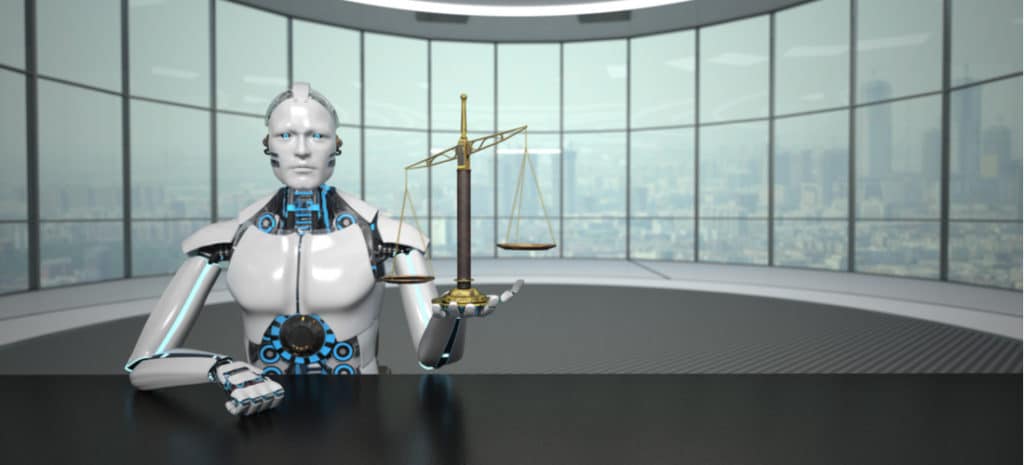This article was updated in April 2023.
When used well, artifical intelligence can be a useful way to boost your promotional efforts, and provide a more engaging experience for your audience. However, there are also a few things you’ll need to look out for, particularly the formation of unintended bias.
AI technology is not without its faults. Although issues arise with just about any form of new technology, AI’s complexity makes it prone to unique problems. This is particularly evident in the growing issue of AI bias.
AI bias appears when AI technology begins to make judgements based on characteristics that aren’t relevant to the task at hand.
Just as with human bias, this has proven to be particularly common when it comes to demographics such as race, gender, and sexuality. For example, recent studies found that an AI algorithm used by authorities in the U.S. to predict the likelihood of criminals reoffending was biased against African Americans.
This assumption is harmful on many levels, naturally, and can result in more serious issues over the long term. The same study also found that the system underestimated the likelihood of white criminals reoffending, which again has troubling ramifications.
The AI Algorithm & Unintended Bias
As the inner workings of algorithms like these are not often made available, it’s hard to pinpoint how they went so wrong. However, we can safely assume that the data input into the system has something to do with it.
After all, an AI algorithm can only function based on the information we feed into it. Failing to correctly account for all scenarios is bound to lead to some issues.
For example, if you created an AI chatbot designed to provide fashion recommendations but gave it outdated information to base its judgements on, it wouldn’t be able to fulfill its purpose. While this is a less serious problem, it illustrates the way mistakes are often made with AI.
The main reason AI often ends up working with incomplete (or inaccurate) data is because it can be difficult to obtain well-rounded datasets. Many companies simply use whatever is easy and readily available. They may even fail to include any specific data at all.
Rushed training algorithms can also contribute to the formation of unintended bias. The popularity of AI has resulted in plenty of quick-fix efforts, despite the fact that this technology takes time to develop properly.
Let’s circle back to our earlier example of a customer service chatbot. This kind of AI is typically designed to “learn” from the people it interacts with. Any conversations it has will influence the way it operates. This means that over time, it can end up echoing the biases of its users. In fact, that effect is incredibly likely, unless it’s guarded against from the beginning.
2 Ways to Avoid Unconscious Bias in Your AI
The best way to prevent AI bias is to use comprehensive sets of data that account for as many scenarios as possible. To do that, you’ll want to take a few key factors into consideration.
Employ a more diverse team
A diverse workforce is valuable for many reasons. However, it can be especially important during the production of AI. If your development team is comprised entirely of white men in their forties, for example, you’re unlikely to achieve a well-rounded set of data.
Instead, an algorithm produced by this group may automatically favor those users who are also white, male, and middle-aged. This is because it will only have the experiences of that set of individuals to work from. On the other hand, a diverse team can identify factors and considerations that may never have occurred to the more homogenous group.
In other words, having employees from a wide range of backgrounds makes it easier to produce a technology that is prejudice free. Bringing a more diverse team on board starts with your company’s image. To attract many types of people, make sure everything you do as a brand echoes the fact that you are an inclusive business.
You should also seek to address any unconscious bias in your existing employees as well. Ensure that your hiring team thoroughly understands the importance of real representation in the workforce. After all, this is an issue that expands far beyond the use of AI.
Spend more time developing your technology
If you want to craft a well-rounded AI tool, you have to give the process plenty of time. Don’t rush the production of your data. Instead, carefully consider everything you’ll need to include. By filling in any gaps ahead of time, you can give the software a more complete picture of the particular task it was designed to fulfil.
This process can also help you avoid any bias-related issues, as you’ll be able to account for them ahead of time. Certain AI can even be trained to recognize harmful information, and automatically block or reject it, as well as the individual who input it.
As this is more of a technical issue, it will need to be addressed at your AI’s creation stage. If you’re working with a developer, make sure you ask them to program the AI to deal with biased data appropriately.
When personally crafting your AI using a tool like Dialogflow, you’ll have to spend some time teaching it the correct way to respond to harmful content. Recent developments in Natural Language Processing (NLP) are likely to improve AI in this area moving forwards.
There’s no denying the popularity of AI in content and marketing. However, it’s vital that you put in plenty of thought and effort when crafting your own forms of this technology. Fortunately, taking the time to gather a well-rounded set of data with a more diverse team should help you avoid any bias problems.
Do you have any further questions about AI’s bias problem? Let us know in the comments section below!
